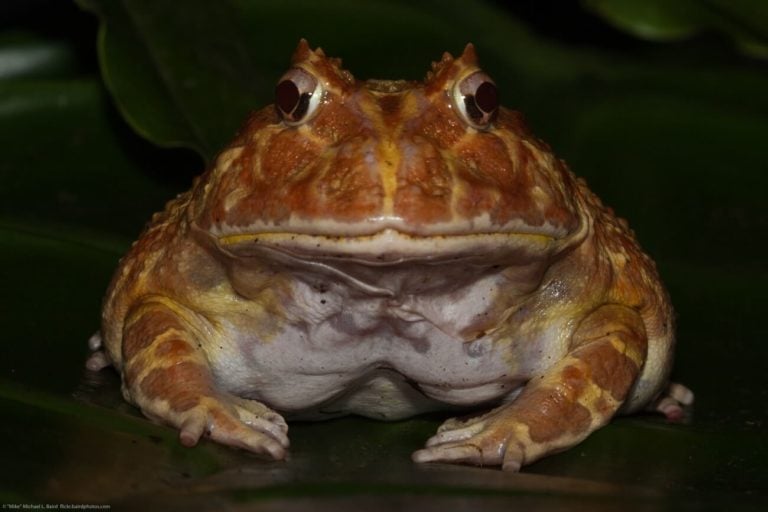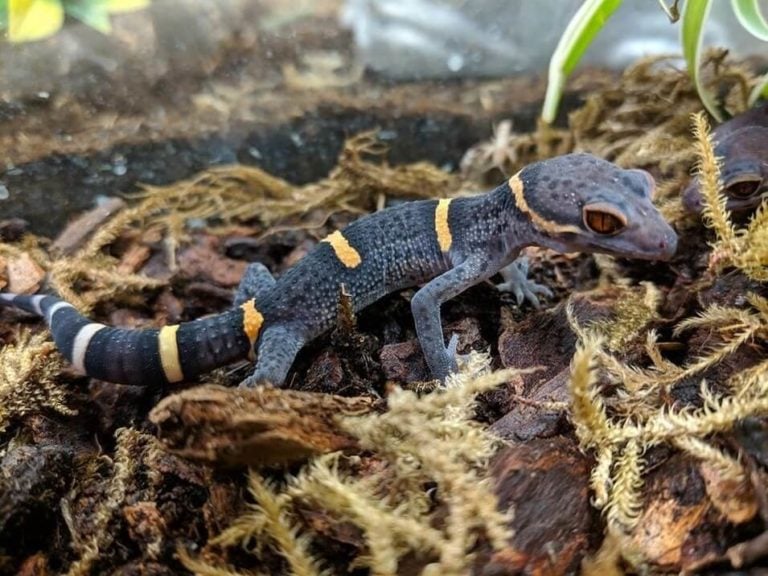The crested gecko is one of the most popular pet reptiles on the planet. These critters are unique, fun to observe, and easy to care for.
But for whatever reason, there’s a lot of misinformation online about their requirements. This leads to inexperienced owners keeping them in subpar conditions, or just being unsure of what to do in general.
And that’s exactly why we put this guide together.
This crested gecko care sheet will cover everything you need to know about keeping this reptile as a pet. You’ll learn about their ideal food, habitat setup, tank size, temperature, lifespan, and more.
By the time you’re done reading this, you’ll be ready to own one yourself!
Table of Contents
Species Summary
Crested geckos (Rhacodactylus ciliatus) are one of the most widespread gecko species in the world. But, it wasn’t always that way!
For several decades, these lizards were thought to be extinct. They were quite rare in captivity. That all changed in 1994 when they were rediscovered in New Caledonia. While wild specimens are unavailable for export, these geckos are quite easy to breed in captivity.
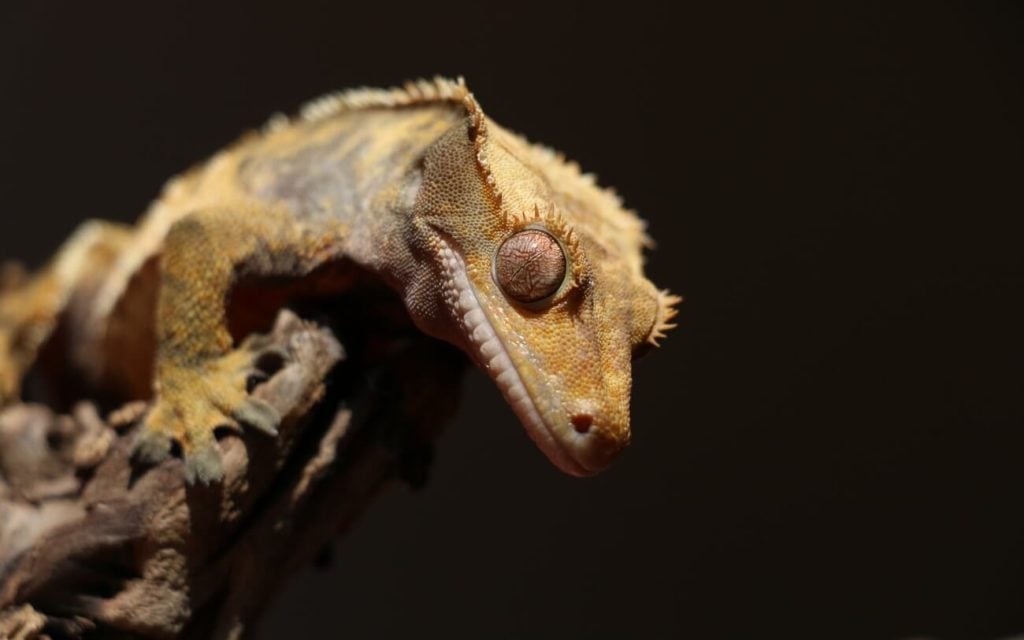
Today, crested geckos are found all over the place and are regularly kept as pets. This is because they’re hardy and easy to take care of.
Thanks to their relatively docile nature, these are some of the best pet lizards for newer reptile owners as well.
Crested Gecko Lifespan
The average crested gecko lifespan is between 15 and 20 years when kept in captivity. This makes caring for them quite the long-term commitment!
That said, their exact lifespan is still a bit uncertain (hence the larger range). Remember, these geckos were quite rare before 1994. Thus, their lifespan in smaller habitats is still being studied.
Expert Note: Like all reptiles, crested geckos are directly affected by their environment. Their longevity can suffer if they experience constant stress and a myriad of health issues if they aren’t receiving proper care.
Appearance & Colors
Crested geckos are beautiful reptiles that come in a wide range of colors and patterns. The most common colors you’ll see include brown and cream. Oftentimes, those colors are accompanied by darker spots or larger lateral stripes.
The cool thing about crested geckos is that color and pattern combinations aren’t genetically fixed like they are with other species. There’s some genetic inheritance, but morphs can vary widely. As breeders continue to experiment with morphs, we’re bound to see even more variation in the future.
Even today, you can find crested geckos covered in eye-popping patterns with colors of orange, red, white, and more.
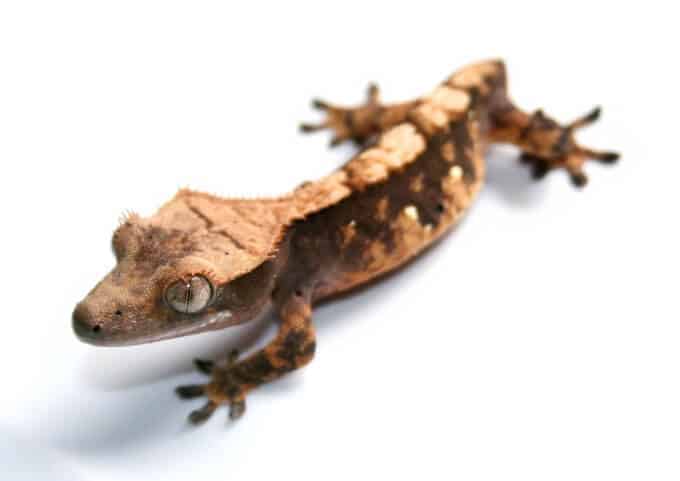
Regardless of the coloration, there’s one thing all Crested Lizards have in common. That’s the pronounced crest that starts at the top of their head.
It usually begins above their eyes and extends down some portion of the back. The size of the crest can vary from gecko to gecko.
The crest is fringed, giving the lizard a somewhat spiky look. Large beady eyes with a thin slit round off the gecko’s facial features.
Like most geckos, this species has some unique feet as well. They’re sporting rounded toe pads. They help the lizard cling onto vertical surfaces for climbing.
Average Size
The average crested gecko size can reach lengths of 7 to 9 inches when fully-grown. That measurement is from the tip of their snout to the end of their tail (which is the standard form of measurement).
From snout to vent, they are usually between 4 and 4.5 inches.
That second measurement is just as important as their full length because of their ability to drop their tails. Many adult geckos will drop their tails in times of stress. If you’re keeping multiple crested geckos together, they may also lose it during a fight.
Unfortunately, crested geckos cannot regenerate a new tail. This is something that many beginning owners don’t realize at first.
This means they’re left with a short stubby tail. Fortunately, this is completely normal and nothing to concern yourself with as long as the lizard is healthy.
Expert Note: Most owners prefer longer tails. If you’re in that group you should take extra care to provide these creatures with optimal care.
Crested Gecko Care
Crested gecko care is a very beginner-friendly process. These animals are quite hardy and low-maintenance!
But that doesn’t mean that you can avoid following established care guidelines. The health of these reptiles is directly affected by their environment and diet.
To help your gecko live a long and healthy life, here’s some crucial care information you need to know.
Tank Size & Dimensions
One of the most important things to do when caring for a reptile is to provide the best habitat possible. That all starts with making sure their tank or enclosure is the proper size.
A single adult crested gecko should have a tank size of at least 20 gallons. This can be a standard tank that measures 18 inches wide, 18 inches long, and 18 inches tall.
However, a vertical tank is much more preferred. Tanks that measure 12 inches long, 12 inches wide, and 24 inches tall will work just fine.
That is the bare minimum for a single crested gecko. If you plan to keep more than one lizard together, you’ll need a much bigger tank.
Crested geckos do best in an environment that has at least one screened side. This could be the top of the tank. However, those living in hotter climates may fair better with an all-screen enclosure.
The reason for this is that screened enclosures provide more air ventilation and can help avoid respiratory problems for the lizard.
Habitat Setup
Crested geckos are arboreal, which means that they spend most of their time in trees when living in the wild. Aim to recreate a similar environment in your gecko’s tank.
Provide plenty of vertical climbing space so that the reptiles can explore the area and regulate their body heat.
Use driftwood, cork bark, bamboo, and vines. These climbing branches should be arranged strategically to provide multiple levels of enjoyment for your gecko.
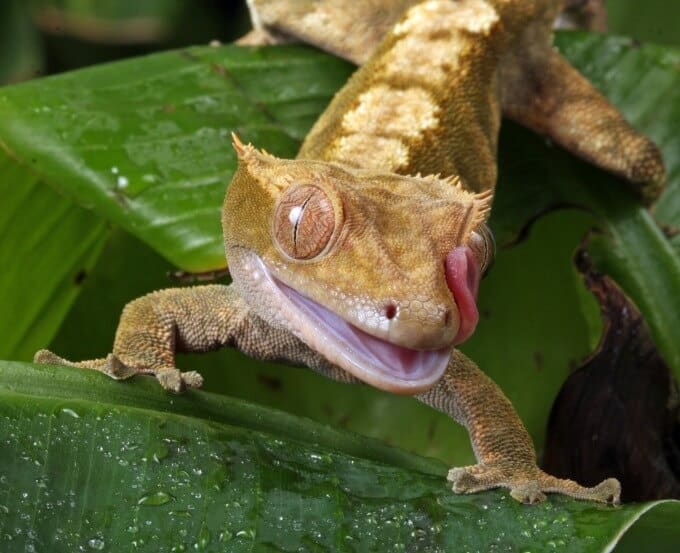
In addition to climbing branches, you’re going to need plenty of vegetation. Crested geckos need fake or real plants for shelter.
Plastic plants do just fine, but living plants can do a lot to support humidity levels. Ficus, Philodendron, Dracaena, and Pothos plants are all good choices.
At the bottom of the tank, you’ll need a good substrate. Fortunately, you have a lot of options here. Most owners steer clear of materials with large pebbles. Crested geckos have been known to eat gravel, which leads to digestive issues.
You can use something as simple as paper or paper towels. Standard reptile carpet, coconut fiber, or moss works well, too. All of those materials soak up water, which helps to maintain humidity levels.
Expert Note: When you’re arranging the tank, make sure that you have plenty of open space. It’s quite easy to overcrowd reptile habitats, and crested geckos prefer having an open climbing space.
Keeping plants to the backdrop is recommended when setting up a habitat for these lizards.
Temperature & Lighting
When it comes to lighting, crested geckos are relatively low maintenance. They are largely nocturnal creatures. Because of this, you don’t need to have a UVB lamp like you would with other reptiles.
Some owners still prefer to use a UVB lamp, but it’s not necessary. A standard incandescent light and a red light for nighttime viewing are all that you need.
Crested geckos require temperatures between 72°F and 82°F during the day.
Somewhere in the middle of that range, such as 78 degrees, is preferred. At night, temperatures can drop to the high 60s and low 70s.
If you live in an area that gets cold during the winters, radiant heating is essential at night.
You can get a ceramic heat emitter and a red light for additional heat sources. Make sure that you place heating sources on one part of the enclosure, such as the top.
These geckos will regulate their temperature on their own. This means you should always make sure to have some cooler parts of the tank available to them.
Water, & Humidity
These reptiles stay hydrated in a couple of different ways. The most obvious is through drinking. You should have a shallow water dish in the tank at all times. Fill it with filtered dechlorinated water regularly.
Crested geckos will also drink from the water that flows off of plant leaves. It’s recommended that you mist the enclosure every evening. Remember, these are nocturnal reptiles. So, you want to do the misting at night when they start to get active.
Misting also helps to maintain humidity levels. Crested geckos prefer moderate to high humidity levels.
Use a hygrometer to test this regularly. The enclosure should be kept at 60 to 70 percent humidity at all times.
Crested Gecko Food & Diet
Crested geckos aren’t too fussy when it comes to food. These creatures are easy to feed and provide a well-balanced diet.
This is great because there are some great commercial gecko foods available. These foods can be used as a diet staple.
However, supplementary foods are good too.
These geckos love live insects. Crickets, roaches, silkworms, and waxworms are good options.
Just make sure to dust the insects with calcium and Vitamin D3 powder a few times a week. Multivitamin supplement powder should be used once a week as well.
If you provide crickets, they should also be gut loaded prior to feeding. This means that the crickets are fed calcium-rich foods. Many pet stores will do this for feeder crickets, but make sure you check beforehand.
Other suitable snacks for crested geckos include bananas, peaches, mangoes, pears, and other fruits. Just make sure to mash the fruit up for easy ingestion.
Adult crested geckos don’t need food every day to stay healthy. Feeding every other day is ideal. Juveniles, on the other hand, will need daily feedings to grow.
Expert Note: With all crested geckos, the food needs to be small enough to ingest safely. As a good rule of thumb, make sure that insects are smaller than the space between the eyes.
Potential Health Issues
There are a couple of health issues you should be wary of. Many of the common diseases are caused by changes in the environment. Luckily, they can usually be treated by a vet with no issues.
One of the most common diseases to watch out for is stomatitis. Also known as mouth rot, it’s an inflammation of the membranes around the mouth. It can be diagnosed by redness and mucous around the mouth area.
If your gecko is drooling or making strange breathing noises, they may be suffering from a respiratory infection. This is usually caused by temperature and humidity changes.
Parasitic infections are possible as well. Symptoms typically include difficulty shedding and rashes on the skin.
Behavior & Temperament
For the most part, crested geckos are docile. They will spend their day hiding beneath plant leaves or basking on a branch. At night, they become more active. You can usually see them moving around the tank to regulate body temperature.
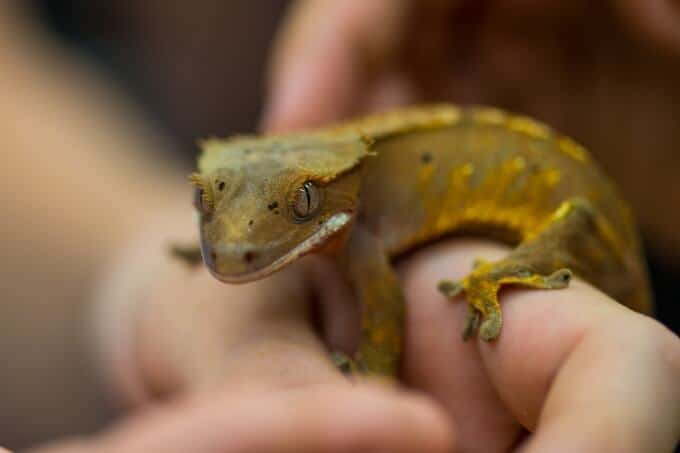
They are quite peaceful and won’t cause any problems. However, males have been known to get into some squabbles.
Males can get territorial and will fight to protect their space. This can lead to the reptiles losing their tails or experiencing other injuries.
As a result, it’s recommended that you stick to a rule of one male per enclosure. They can be kept with multiple females, but two males should not share the same space.
Another thing to be cautious about is handling. Crested geckos are notorious for jumping out of their owners’ hands. They are skittish and will leap to escape your grip, which can lead to some serious injuries.
Be gentle about handling your geckos. We recommend limiting handling the reptile to five minutes or less to avoid stress.
Breeding
The crested geckos breeding process is relatively easy. They reach maturity at about a year and a half of age. Some take up to two years to read sexual maturity.
At that point, you can easily differentiate the sexes by looking at the base of the tails. Males have a noticeable bulge.
Crested geckos have a very long breeding season. It lasts from December to August! During this time, a bonded pair will breed frequently.
Females will lay two eggs every 30 to 45 days.
It’s recommended that you remove males and house them in a separate tank when the breeding season is over. This gives the female a chance to recover a bit.
The eggs will take over two months to incubate. Depending on the temperature, it can take as long as 120 days. However, most eggs will hatch after about 75 days.
These babies can be removed and kept in smaller enclosures as they grow.
Now You Have The Knowledge
As you can see, crested gecko care is not something to be intimidated by. In general, it’s really straightforward!
As long as you follow the recommendations in this care sheet and stay consistent you and your pet will be just fine. It’s when owners start to get complacent that health problems arise.
If you still have questions about this species or have stories about your own crested gecko that you’d like to share, feel free to reach out. We always love hearing from our readers!

